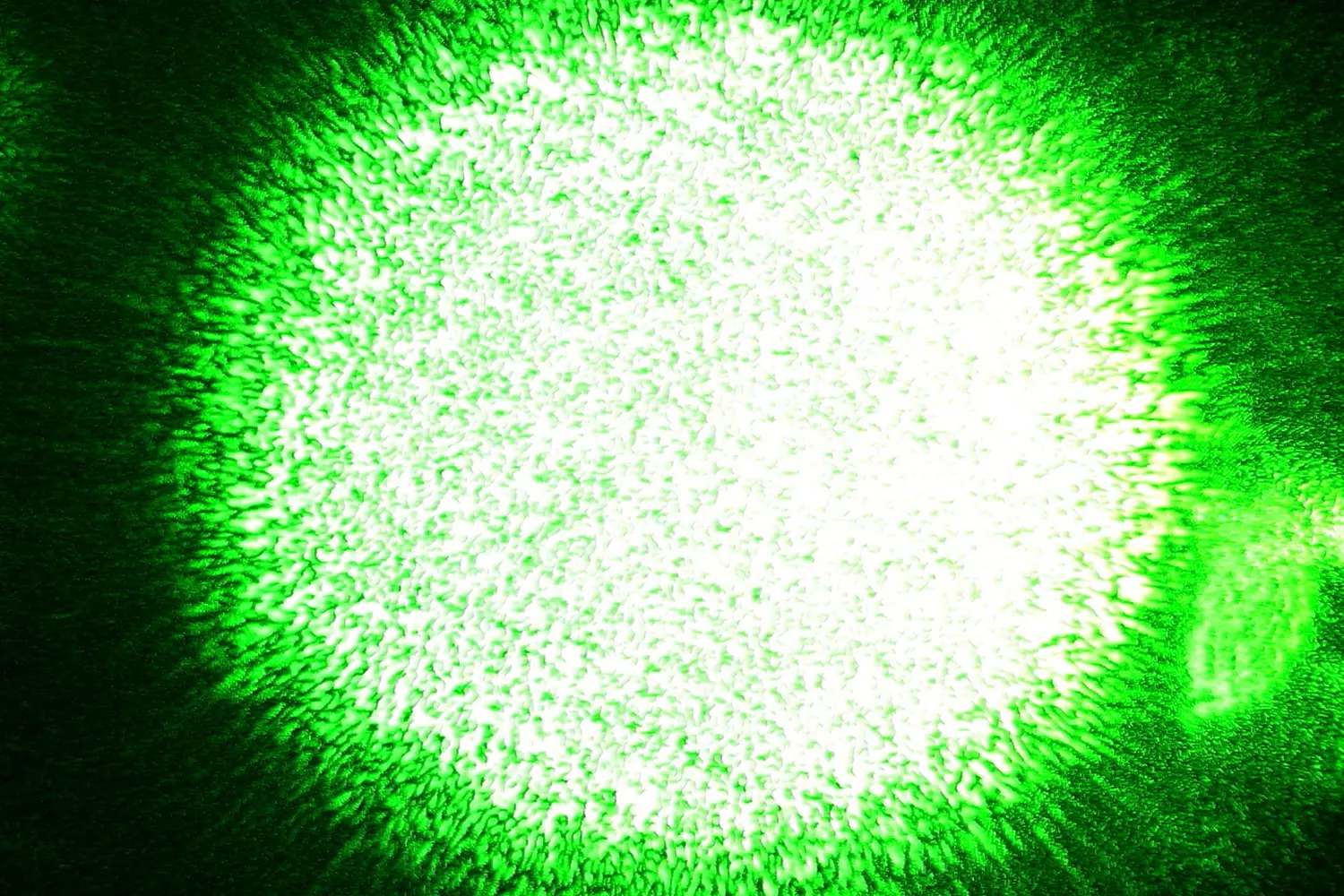Comprehensive use of the advantages of laser light
In image projection technology, lasers have considerable advantages over other light sources. Bright, colour-intensive, brilliant images can be created using the compact, maintenance-free, energy-efficient laser modules. When viewed, however, the image is perceived as “spotty”. As part of this MSc thesis, the causes of this problem were investigated in depth in order to realise solutions that suppress the spots.

Many advantages - but a serious disadvantage
Conventional light sources for cinema projectors have a limited lifespan of just a few months – with worsening performance and a consequent decline in image quality. It would therefore make sense to replace this light source with laser technology, as lasers last much longer and are also virtually maintenance-free. However, the long wave trains emitted by the laser lead to unwanted interference effects, which are perceived by the human eye as a “spot structure” or shimmering “veil” when the image is viewed, referred to as “speckles”. This effect also leads to unacceptable losses in image or scan quality with laser-operated head-up displays (HUDs) or barcode readers. Lasers can therefore only be used in projection technology once the speckle effect has been successfully suppressed.
Identification of key parameters
The perceptibility of the speckles can be suppressed using a diffuser, which blurs the disturbing spot structure. Such a diffuser is the laser speckle reducer (LSR), as already currently offered on the market by the Optotune company. It is based on an electroactive polymer as an actuator. The decisive parameters of the setup, including the positioning of the LSR and the structure of the diffusers and of their movement patterns, have to date been determined on a purely experimental basis by means of observations. The objective of the MSc thesis was now to physically understand the phenomenon of speckle formation from scratch, and to model it mathematically. In this way, it should be possible to systematically investigate the influence of the various parameters in order to improve the existing product and to develop design rules for use in various application contexts.
From speckle model to a large number of applications
The modelling of the speckle patterns proved to be extremely computationally intensive. From every point on the screen, the spreading of millions of wave trains to the eye’s retina needs to be calculated. Since the calculations are also very susceptible to spurious, purely numerical side effects, a corresponding algorithm was written from scratch. In order to check the model that was subsequently created with it, the results were compared with measurements – which showed excellent alignment. It was possible to identify important key parameters for the laser projections and thus to answer initial, still open design questions for the next generation of LSRs. The complexity of the issue first became apparent during the course of the thesis. The work was continued with the industrial partner Optotune as part of a CTI project.
About the author of the thesis
Gabriel Speziga graduated with a Master of Science in Engineering. His MSc thesis, entitled “Modelling and characterisation of laser speckles and their suppression through the use of a laser speckle reducer from the Optotune company”, was supervised at the Institute of Applied Mathematics and Physics in the focus area of Applied Optics. Following his studies, Gabriel Speziga accepted a position at the ZHAW and, within the framework of the CTI research project named above, successfully advanced the development of laser projection.
Supervisor: Christoph Stamm